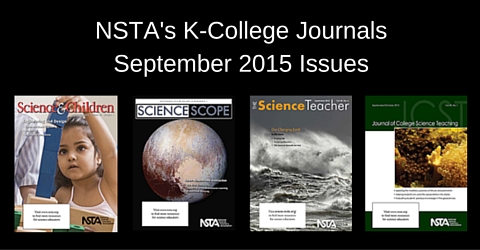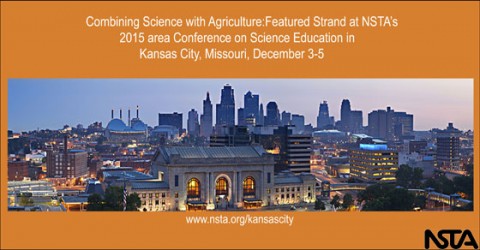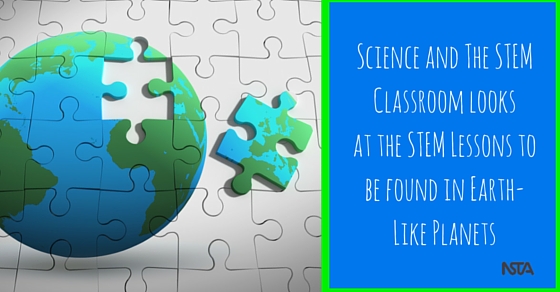Informal professional development
By Mary Bigelow
Posted on 2015-09-10
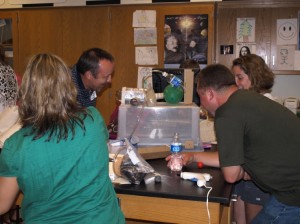 I teach in a private school that does not offer much in terms of professional development (PD), especially for science teachers. My colleagues and I would like to visit some science museums and centers. Would that count as PD? Do you have any other suggestions for us? —M., Maryland
I teach in a private school that does not offer much in terms of professional development (PD), especially for science teachers. My colleagues and I would like to visit some science museums and centers. Would that count as PD? Do you have any other suggestions for us? —M., Maryland
To a science teacher, an ideal day away from school might include a stroll through a zoo or botanical garden, an afternoon in a cool planetarium or aquarium, a visit to a science center or natural history museum, or a hike through the woods or on a beach with a camera, a pair of binoculars, and a guidebook. On these personal field trips, we don’t need to worry about permission slips and bus counts – we can follow our interests and learn on our own terms.
It’s enjoyable to visit one of these places with another science teacher. The level of conversation is different than when you visit these places alone, with students, or with your families. A day exploring one of these venues and discussing science topics is a great way to increase content knowledge and examine different ways of learning.
For example, one day at the American Museum of Natural History in New York, my colleague and I spent a lot of time with the exhibits related to plate tectonics. We learned new content information, and the displays gave us some ideas for sharing this information with our students. We took lots of notes and made lots of sketches. (Our spouses, who are not science teachers, eventually wandered off to other exhibits!)
My school district allowed my colleague and me to count the time we spent in the museum as PD hours. We submitted a report describing where we went, what we did, what we learned, and how that learning will apply to the classroom. You could ask your school administrator if such a procedure would be acceptable in your situation.
With all that we can learn both onsite and online (through websites, e-mail lists, and social media), perhaps this informal, individualized PD should become a viable part of our ongoing professional education. Unlike more formal, school-wide PD events, we set the goals and personalize the experience to our own needs. This process keeps us informed and up-to-date, building on our previous knowledge and inspiring us to continue to learn new things. (I’m sure that my childhood visits to the Franklin Institute in Philadelphia had a profound influence on my own interest in science.)
NSTA’s position statement on informal science education recognizes the contributions of informal science institutions and organizations in providing opportunities for lifelong learning—and not just for students but for teachers, too.
You can also visit science museums and centers through the eyes of your students. What strategies do the informal educators use to attract our attention and hold our interest in the exhibits? In The Science Teacher, “Learning Science Beyond the Classroom” describes some of these techniques. Could any of these apply to the classroom?
As the price of travel increases, don’t forget to visit places close to home. To find a new place to visit, check out the website of the Association of Zoos and Aquariums or the American Alliance of Museums. If you’re a member of an organization, check for reciprocal admissions. Many of these organizations offer lectures, field trips, hands-on workshops, graduate study, meet-a-scientist, and other special events that could become part of an individualized or informal PD plan.
Many of these informal science venues have excellent websites, too. I can spend hours on the website of the Exploratorium in San Francisco with its comprehensive collection of lessons and demonstrations for the classroom. These institutions may also have virtual tours, too. The National Park Service website has armchair views of the parks – not quite the same as being there, but still a good experience.
Adding informal, teacher-selected opportunities to a school’s PD plan is a win-win option. Teachers (or groups of teachers) can design opportunities based on their individual subject area needs and the school can spend its ever-decreasing PD funds on school-wide topics.
More PD suggestions:
NSTA’s K-College September 2015 Science Education Journals Online
By Korei Martin
Posted on 2015-09-07
Wondering how to introduce your students to engineering? Want an in-depth look at Pluto? Want to know when the “Great Acceleration” began and why it’s named that? The September K–College journals from the National Science Teachers Association (NSTA) have the answers you need. Written by science teachers for science teachers, these peer-reviewed journals are targeted to your teaching level and are packed with lesson plans, expert advice, and ideas for using whatever time/space you have available. Browse the September issues; they are online (see below), in members’ mailboxes, and ready to inspire teachers!
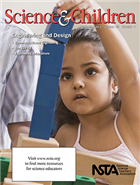 Science and Children
Science and Children
The Next Generation Science Standards (NGSS) is leading the call for more emphasis on engineering in our schools. This issue of S&C includes strategies, ideas, and techniques to help you bring engineering and the design process into your classroom.
Featured articles (please note, only those marked “free” are available to nonmembers without a fee):
- Free – Answers to Teachers’ Questions About the Next Generation Science Standards
- Community-Based Engineering
- Designing a Sound-Reducing Wall
- Free – Editor’s Note: STEM
- Gimme an “E”!
- Free – Scampering Into Engineering!
- The EDP-5E
- Full Table of Contents
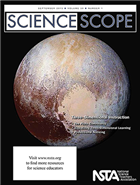 Science Scope
Science Scope
The New Horizons space mission provided us with a spectacular, in-depth look at Pluto as it hurtled by the dwarf planet in July of this year. In this issue, we explain how to take an in-depth look at a variety of science concepts by incorporating the three dimensions of the Next Generation Science Standards into your lesson plans.
Featured articles (please note, only those marked “free” are available to nonmembers without a fee):
- Free – Answers to Teachers’ Questions About the Next Generation Science Standards
- Botanical Heart Throbs: Heart Rate in Blackworms
- Free – Editor’s Roundtable: Three-Dimensional Teaching
- Exploring the Science of Less-Familiar Forms of Animal “Flight”
- Free – The Controversy Over Pluto: Planet or Astronomic Oddball?
- Using Professional Noticing to Address Middle Level Students’ Alternative Conceptions of Lunar Phases
- Full Table of Contents
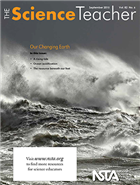 The Science Teacher
The Science Teacher
Change has always been a constant on planet Earth, yet change today seems different both in pace (fast) and source (us). The middle of the 20th century began what has been dubbed a “Great Acceleration,” a rapid and profound transformation of humanity’s relationship with the natural world, a relationship addressed in several feature articles in this issue. This accelerated change has led scientists to consider whether to christen a new geological epoch, the Anthropocene, to recognize the human species as a biogeophysical force capable of leaving a durable imprint on the geological record. The Earth’s intricate interrelated systems deserve our mindful attention and protection. If this is truly the age of the Anthropocene, will we be up to the task?
Featured articles (please note, only those marked “free” are available to nonmembers without a fee):
- Free – A Rising Tide
- Free – Answers to Teachers’ Questions About the Next Generation Science Standards
- Free – Editor’s Corner: Our Changing Earth
- Ocean Acidification
- Teaching Science Through Inquiry
- The E-mail Lab
- The Resource Beneath Our Feet
- Full Table of Contents
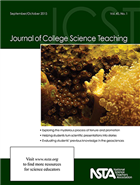 Journal of College Science Teacher
Journal of College Science Teacher
Learn how one author increased student confidence in giving scientific presentations by showing them how to present findings as a narrative story or personal anecdote. Don’t miss the study that assessed the effect of a problem-based learning teaching strategy on student academic achievement in an undergraduate Biomechanics course. Also, read how participation in Saturday Science—a weekend science enrichment program where local families are invited to participate in hands-on science activities—led to increased confidence for student teachers in various aspects of science teaching and learning.
Featured articles (please note, only those marked “free” are available to nonmembers with
out a fee):
- Free – Editorial: Heavy in August
- Geographic Affiliation and Sense of Place: Influences on Incoming Online Students’ Geological and Meteorological Content Knowledge
- Free – Getting the Most Out of Dual-Listed Courses: Involving Undergraduate Students in Discussion Through Active Learning Techniques
- Interactive Taste Tests Enhance Student Learning
- Research and Teaching: Assessing the Effect of Problem-Based Learning on Undergraduate Student Learning in Biomechanics
- Research and Teaching: Data Visualization Literacy: Investigating Data Interpretation Along the Novice–Expert Continuum
- Research and Teaching: Investigating Preservice Teachers’ Self-Efficacy Through Saturday Science
- Turning Scientific Presentations Into Stories
- Using Reading Quizzes in STEM Classes—The What, Why, and How
- Full Table of Contents
Get these journals in your mailbox as well as your inbox—become an NSTA member!
The mission of NSTA is to promote excellence and innovation in science teaching and learning for all.
Follow NSTA
NSTA Needs You To Be One of Our Next Leaders
By Guest Blogger
Posted on 2015-09-07
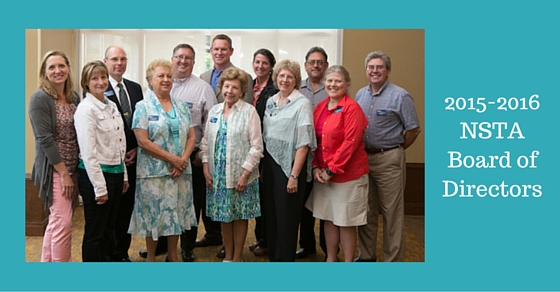
Reflecting on the Uncle Sam poster used in recruiting individuals to serve in the United States Armed Services, I’m putting out a call on behalf of the National Science Teachers Association (NSTA) Board and Council for science teachers to become the next leaders of NSTA. The NSTA Board of Directors and Council work together to promote excellence and innovation in science teaching and learning for all. There are many opportunities to serve, and you can learn more about them in a web seminar being held on September 8 (archives will be available for those who cannot attend the live seminar). Nominations are now open to apply for the following leadership roles:
- President-Elect
- Coordination & Supervision Director
- High School Level Director
- College Level Director
- District Directors in Districts III, V, IX, XI, XV, and XVII
Being a member of the NSTA leadership team enables you to be on the front line of promoting science education. We are in an exciting time of empowering our students to become the next generation of innovators and creative thinkers. As part of the leadership team, you will bring that message to our members and others that science education counts.
So don’t delay. Applications are available online, and the deadline for submitting applications is October 19, 2015.
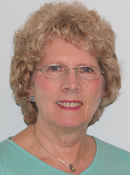 I can’t wait to see who will take the challenge of being a NSTA leader and be on the ballot for the 2016-2017 NSTA Leadership Team!
I can’t wait to see who will take the challenge of being a NSTA leader and be on the ballot for the 2016-2017 NSTA Leadership Team!
Carolyn Hayes is the NSTA President, 2015-2016; follow her on Twitter at caahayes.
The mission of NSTA is to promote excellence and innovation in science teaching and learning for all.
Follow NSTA
Wendy Saul at #NSTA15 Kansas City: Curiosity Takes Center Stage
By Korei Martin
Posted on 2015-09-03
Dr. Wendy Saul has been a vital part of the science literacy community since 1985 when she co-authored Vital Connections: Children, Science and Book. Since then Saul has focused her attention on the relationship between science and language and how it can be better integrated in schools and libraries.
NSTA members know her from the book Front-Page Science: Engaging Teens in Science Literacy (read a sample chapter), which offers science journalism techniques that help students become better consumers of, and contributors to, a scientifically literate community.
Fostering an Insatiable Curiosity
This December 3–5, fans of Saul can meet her in person, at the 2015 Area Conference on Science Education in Kansas City, Missouri, where she will share her thoughts on sparking curiosity and active learning in students. Don’t miss “Fostering an Insatiable Curiosity: Planning for the Future,” on Friday, December 3 9:30-10:30 AM, in the Kansas City Convention Center, room 2105.
Curious about what else will be happening during the conference? Here is a sample list of other sessions:
- STEMming The Zombie Tide
- AMSE Session: The Overlap between Culturally Responsive Teaching and the NGSS
- Hovercrafts and Newton’s Laws
- CPO’s Link™ Chemistry Models: Fun with Atom Building and the Periodic Table
- Earth Science for Our Next Generation of Very Young Scientists
- Archaea and the Three Domains: Classification of Life for Middle School
- Teach Engineering Principles on the Cheap with Concrete
 Want more? Check out more sessions and other events with the Kansas City Session Browser/Personal Scheduler. Follow all our conference tweets using #NSTA15, and if you tweet, please feel free to tag us @NSTA so we see it!
Want more? Check out more sessions and other events with the Kansas City Session Browser/Personal Scheduler. Follow all our conference tweets using #NSTA15, and if you tweet, please feel free to tag us @NSTA so we see it!
The mission of NSTA is to promote excellence and innovation in science teaching and learning for all.
2015 Area Conferences
2016 National Conference
2016 STEM Forum & Expo
Follow NSTA
Encourage a Sense of Wonder in Your Students
By Carole Hayward
Posted on 2015-09-02
 New books in the NSTA Kids I Wonder Why series are available just in time for the new school year! Focused on the biological sciences, these five books introduce readers to basic science content pertaining to plants and animals. Author Lawrence F. Lowery ignites the curiosity of children in grades K–3 while encouraging them to become avid readers. Included in each volume is a Parent/Teacher Handbook with coordinating activities.
New books in the NSTA Kids I Wonder Why series are available just in time for the new school year! Focused on the biological sciences, these five books introduce readers to basic science content pertaining to plants and animals. Author Lawrence F. Lowery ignites the curiosity of children in grades K–3 while encouraging them to become avid readers. Included in each volume is a Parent/Teacher Handbook with coordinating activities.
 Animals Two by Two
Animals Two by Two
 Looking for Animals
Looking for Animals
 The Tree by Diane’s House
The Tree by Diane’s House
The mission of NSTA is to promote excellence and innovation in science teaching and learning for all.
Follow NSTA
 New books in the NSTA Kids I Wonder Why series are available just in time for the new school year! Focused on the biological sciences, these five books introduce readers to basic science content pertaining to plants and animals. Author Lawrence F. Lowery ignites the curiosity of children in grades K–3 while encouraging them to become avid readers.
New books in the NSTA Kids I Wonder Why series are available just in time for the new school year! Focused on the biological sciences, these five books introduce readers to basic science content pertaining to plants and animals. Author Lawrence F. Lowery ignites the curiosity of children in grades K–3 while encouraging them to become avid readers.
What’s popular on NSTA’s website at the start of the school year
By Claire Reinburg
Posted on 2015-09-01
Browse the most popular books, e-books, and children’s trade books on NSTA’s website this month. Best wishes for the start of your school year!
Most Popular NSTA Press Books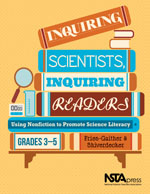
Inquiring Scientists, Inquiring Readers: Using Nonfiction to Promote Science Literacy, Grades 3–5
A Head Start on Science: Encouraging a Sense of Wonder
Exemplary Science for Building Interest in STEM Careers
Using Physics Gadgets and Gizmos, Grades 9–12: Phenomenon-Based Learning
Most Popular NSTA Press e-Books
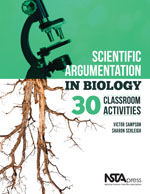 Scientific Argumentation in Biology: 30 Classroom Activities (e-book)
Scientific Argumentation in Biology: 30 Classroom Activities (e-book)
Argument-Driven Inquiry in Life Science: Lab Investigations for Grades 6–8 (e-book)
Uncovering Student Ideas in Life Science, Volume 1: 25 New Formative Assessment Probes (e-book)
Most Popular NSTA Kids Books
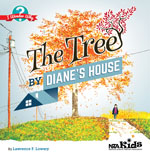 The Tree by Diane’s House: I Wonder Why
The Tree by Diane’s House: I Wonder Why
Browse the most popular books, e-books, and children’s trade books on NSTA’s website this month. Best wishes for the start of your school year!
Cell Structure and Function
Earth-Like Planets in the STEM Classroom
By Becky Stewart
Posted on 2015-08-31
On our vacation this year to Rockport, Massachusetts, we spent an hour one night watching the Perseid meteor shower. This is my favorite meteor shower because I can lay outside and not get cold too fast. The night sky is far darker on the end of Cape Ann than it is at home in Delaware, so it was a rewarding activity. There’s really nothing like staring at the stars and pondering the vastness of space to make you realize your puny human problems aren’t worth losing sleep over.
Ancient astronomers were the first to notice that most of the objects in the night sky moved in circular patterns. They also observed that a few did not move this way, and those they named wandering stars. The ancients’ wandering stars are what we today know as planets. Almost since humans recognized that Earth was also a planet, we have wondered whether there could be life in other parts of the universe. Recent technological advancements in astronomy have increased confidence in the probability that there are other forms of life in the universe.
Detection and Identification
The United States National Air and Space Administration (NASA) developed the ongoing Kepler mission to detect other planets in the universe and identify those that are similar to Earth in size, chemical composition, and orbit. Kepler is a spacecraft and photometer that continuously points at the same group of stars. The Kepler mission has identified a number of Earth-like planets in the habitable zones of stars. Since its launch on March 6, 2009, Kepler has identified 12 Earth-like planets in the habitable zones of stars. This is remarkable because the Kepler field of view is just a tiny portion of our galaxy, and the galaxy is a tiny portion of the universe.
Identifying a planet as potentially habitable isn’t enough to say if it is certainly so. The crucial element is water. The habitable zone for humans is identified as the orbital period around a star where liquid water might exist on the surface of the planets. The way that astrophysicists calculate a planet’s temperature is described here. The habitable zone for a star system can also be calculated.
A potentially habitable planet must also have an atmosphere. An atmosphere shields the planet’s surface from impacts and radiation, both of which can be hazardous to life. Some researchers have posited that some planets’ atmospheres could evolve over time. If a big planet forms in an outer orbit, with a rocky core and a thick gaseous atmosphere (similar to Neptune in our solar system), tidal forces in that star system could cause the planet to change and move over time. The star’s gravitational pull would stretch the planet into an ellipsoid and possible pull the planet closer to the star. The friction caused by these movements would cause heat, that could potentially drive surface volcanism or drive off lighter gasses in the atmosphere. If the planet has shifted into the star’s habitable zone, the leftover rocky core could be a habitable planet.
Are We Alone?
Although the existence of a number of planets in the habitable zone of other star systems has been proven, no one has yet seen these planets or captured images of them. There are a number of reasons why the search for other habitable planets matters to all of us. One is of course that the question of “Are we alone?” has fascinated humans since the recognition of Earth as a planet. Another is that the natural evolution of a star means that the Sun will eventually make life on Earth unsustainable, and we definitely don’t want to be in the neighborhood when that happens.
The recent discovery of Kepler 452b has been exciting for astrophysicists because its star is very similar to our Sun and the planet is of similar size, mass, and distance from its star as Earth. Its mass is likely about 5 times that of Earth because it is about 60% larger in diameter. The additional mass would provide many thousands of additional years of protection for the planet’s atmosphere from the increased energy of its star.
The relatively new field of astrobiology offers new opportunities for students interested in an interdisciplinary STEM career. Astrobiology degree programs are currently offered at a number of U.S. universities, including the University of Washington and the University of Hawaii. A comprehensive list of international educational resources can be found here.
Produced by the National Science Teachers Association (NSTA), science writer Becky Stewart contributes monthly to the Science and STEM Classroom e-newsletter, a forum for ideas and resources that middle and high school teachers need to support science, technology, engineering, and math curricula. If you enjoy these blog posts, follow Becky Stewart on Twitter (@ramenbecky).
Follow NSTA



